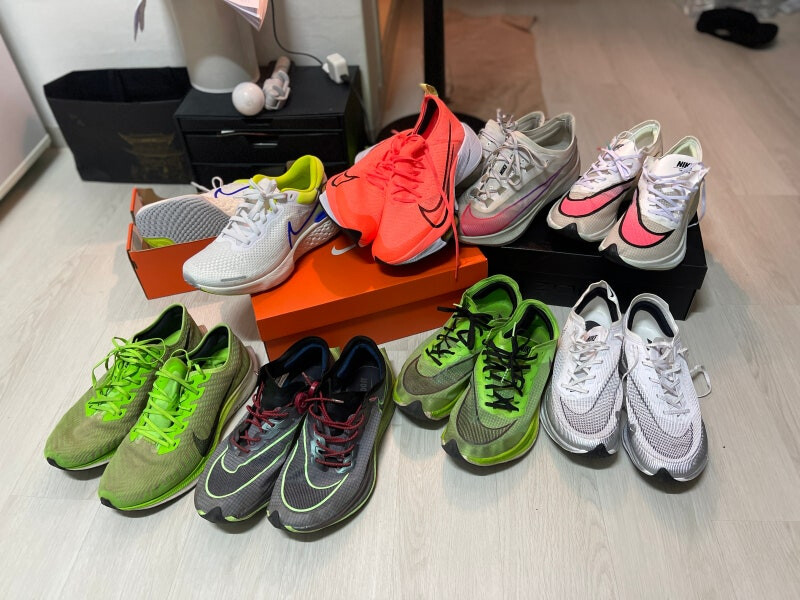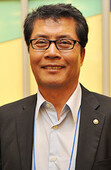
Nike, long considered the undisputed leader in the athletic footwear industry, is seeing its dominance erode. As running gains popularity, particularly among younger generations, emerging brands specializing in running shoes are rapidly gaining traction. Their rise is shaking Nike's once-unchallenged position.
According to industry sources on May 9th, Nike is experiencing a significant slump in performance this year.
The company's revenue for the third quarter of fiscal year 2025 (December 2024 to January 2025), announced in February, was $11.3 billion (approximately 15.5 trillion KRW), a 9.3% decrease compared to the same period last year. Operating profit for the same period plummeted by 41% to $788 million. Net income and earnings per share also saw substantial declines of 32% and 29%, respectively.
During the COVID-19 pandemic, Nike had been thriving. The domestic fashion industry was struggling, but Nike achieved record sales in 2020 and became the first sports brand to reach 2 trillion KRW in single-year revenue in 2022.
Nike focused on releasing design-centric limited-edition sneakers. A collaboration with G-Dragon in 2019 saw resale prices soar to 13 million KRW, becoming a major talking point in the industry. This contrasted with the approach of emerging brands that emphasized functionality in their running shoes, catering to the growing popularity of running.
Consequently, Nike's growth began to decline after the pandemic, not only in its core markets of North America and Europe but also in China.
Nike's simplification of product categories to "Men, Women, and Kids" is also being analyzed as a counterproductive strategy. Critics point out that this streamlining led to a decline in the specialized expertise of key sports like running and basketball.
The Wall Street Journal (WSJ) noted, "A key reason for the crisis is that Nike shifted too quickly to become a lifestyle brand rather than focusing on its core sports value."
Ultimately, facing poor performance, Nike resorted to a management shake-up, but its effectiveness remains uncertain.
According to a Bloomberg report on May 6th (local time), Nike abruptly dismissed Heidi O'Neill, President of Consumer, Product, and Brand, who had been with the company for 26 years. Amy Montagne was appointed as the new Chief Brand Officer in her place. Phil McCartney also joined as the new Chief Innovation, Design, and Product Officer, signaling a significant overhaul of the executive team.
John Donahoe, Nike's CEO, stated, "With the new leadership team, we will lead Nike's next phase of growth."
While Nike's strategic direction wavered, emerging brands began to gain momentum. Notably, On Running, Hoka, and Salomon have become popular among young running enthusiasts.
On Running, a Swiss brand founded in 2010 by Olivier Bernhard, a six-time Ironman champion, emerged from his athletic experience. His insights, combined with collaboration with experts, led to the creation of shoes emphasizing functionality. The brand initially gained recognition for its distinctive "CloudTec" sole with visible cushioning elements.
The company's performance is also on the rise. During an earnings call on March 4th, On Running projected a mid-30% increase in sales for the first quarter of this year. They also anticipated a 20% sales growth rate for the second half, albeit lower than the first quarter.
Hoka, established in France in 2009, originated from the need for comfortable and functional footwear for extreme sports enthusiasts navigating challenging natural environments. The brand has received positive feedback for its heavily cushioned outsoles designed to absorb impact on rough terrain.
Salomon, initially known for its hiking boots, is transforming into a comprehensive sports brand by recently introducing running shoes. The French brand built its reputation on outdoor equipment. Riding the "gorpcore" trend (embracing rugged, functional outdoor fashion), it has also gained popularity among Gen Z as a fashion item.
The Shifting Stride: How Emerging Brands Are Overtaking Nike in the Running Shoe Race
The athletic footwear landscape is undergoing a seismic shift, with the once-unchallenged reign of Nike facing a formidable challenge from a new breed of performance-oriented running shoe brands. Driven by the surging popularity of running, particularly among younger demographics, companies like On Running, Hoka, and Salomon are rapidly gaining ground, their innovative designs and focus on functionality resonating deeply with a new generation of athletes and fitness enthusiasts. This evolution marks a significant departure from Nike's traditional dominance, fueled by lifestyle appeal and high-profile collaborations.
The financial figures paint a stark picture of Nike's current predicament. The company's latest earnings report revealed a concerning 9.3% drop in revenue for the third quarter of fiscal year 2025, accompanied by a dramatic 41% plunge in operating profit. This downturn signals a significant erosion of the market stronghold Nike once enjoyed. While the pandemic years saw Nike achieve record-breaking sales, fueled by a surge in athleisure and online shopping, the post-pandemic reality has presented a different set of challenges.
Historically, Nike's strategy often revolved around creating buzz through design-centric, limited-edition sneakers and collaborations with celebrities. The highly publicized partnership with G-Dragon, which resulted in sneakers fetching exorbitant resale prices, exemplifies this approach. However, as the running trend gained momentum, a new segment of consumers began prioritizing performance and functionality over mere aesthetics. This shift in consumer preference has inadvertently created an opening for brands that place engineering and runner experience at the forefront of their product development.
Emerging brands like On Running, Hoka, and Salomon have capitalized on this evolving demand. On Running, born from the vision of a six-time Ironman champion, Olivier Bernhard, emphasizes innovative cushioning technology, most notably its "CloudTec" system, designed to provide a cushioned landing and a firm takeoff. This focus on the biomechanics of running has resonated strongly with serious runners seeking performance enhancement and injury prevention. On Running's impressive sales projections, anticipating a substantial increase in the current quarter, underscore their growing market traction.
Hoka, originating in France with a mission to create comfortable and high-performing shoes for extreme sports enthusiasts, has gained a loyal following among runners who appreciate its maximalist cushioning. The brand's signature thick midsoles provide exceptional shock absorption, making them particularly popular for long-distance running and trail running, where comfort and protection are paramount. Hoka's reputation for blending cushioning with a surprisingly lightweight feel has further contributed to its appeal.
Salomon, initially renowned for its outdoor and hiking footwear, has strategically expanded its running shoe offerings, successfully transitioning into a comprehensive sports brand. The French company's expertise in creating durable and functional gear for challenging terrains has translated well into its running shoe designs, which often feature advanced technologies for stability and grip. Furthermore, Salomon has unexpectedly gained traction within the fashion world, particularly among Gen Z, due to the "gorpcore" trend, blurring the lines between performance wear and streetwear.
Analysts suggest that Nike's recent struggles can be attributed, in part, to a strategic misstep in overemphasizing lifestyle appeal at the expense of its core sports categories, particularly running and basketball. The simplification of product categories may have inadvertently diluted the specialized expertise that serious athletes seek in their footwear. The Wall Street Journal's observation that Nike may have pivoted too quickly towards becoming a lifestyle brand highlights this critical point.
In response to its declining performance, Nike has initiated a significant shake-up of its leadership team, bringing in new executives to steer the company towards renewed growth. The appointment of Amy Montagne as Chief Brand Officer and the addition of Phil McCartney as Chief Innovation, Design, and Product Officer signal a potential shift in strategic focus. CEO John Donahoe's commitment to leading Nike's "next phase of growth" suggests a recognition of the need for change.
However, the effectiveness of this leadership overhaul remains to be seen. The athletic footwear market is increasingly competitive, with consumers having more specialized and performance-driven options than ever before. Nike faces the challenge of not only regaining the trust of serious athletes but also adapting to the evolving preferences of a younger generation that values authenticity and functionality.
The rise of On Running, Hoka, and Salomon is not merely a fleeting trend. These brands have cultivated strong communities of loyal runners who appreciate their dedication to performance and innovation. Their success underscores a broader shift in the running world, where technology and biomechanics are increasingly valued. For Nike to reclaim its dominant position, it may need to re-emphasize its commitment to core sports, invest in cutting-edge running shoe technology, and reconnect with the evolving needs and preferences of the running community. The race is on, and for the first time in a long time, Nike is finding itself having to chase the competition.
[Copyright (c) Global Economic Times. All Rights Reserved.]






























